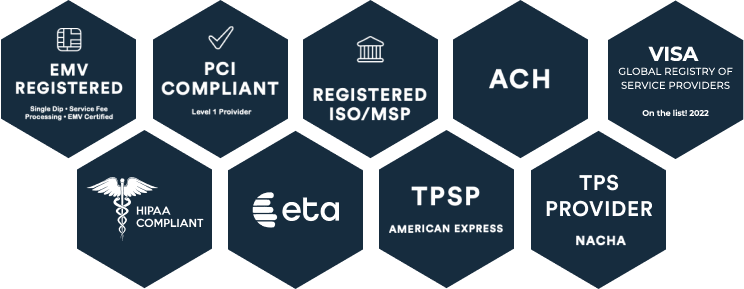Revenue cycle management (RCM) refers to an institution’s financial management process that helps track, identify, collect, and manage incoming payments. This helps businesses foster financial transparency within the company and charge patients the correct amount for the services and healthcare they receive.
In healthcare, the definition of revenue cycle management remains the same. It is meant to help facilities determine required copayments and send treatment costs to patients and health insurance agencies (among other tasks). By implementing RCM, healthcare facilities can avoid overcharging their patients, thus improving the patient experience and becoming more reputable.
But what is revenue cycle management in healthcare, really? We’ll discuss what it looks like in practice, how it can improve the healthcare industry’s financial performance, and other essential points about the nuances of healthcare RCM.
Table of Contents
- What’s the Purpose of RCM in Healthcare?
- The RCM Process
- Healthcare RCM Strategies
- Advantages of RCM
- Challenges of RCM
- Conclusion
What’s the Purpose of Revenue Cycle Management in Healthcare?
Why is revenue cycle management so important in healthcare? The overall purpose of RCM in healthcare is multi-faceted and includes improving:
- Communication with health insurance providers and patients
- Billing for patient care (aka determining patient responsibility)
- Revenue collection and reconciliation
However, the most basic way to explain the purpose of RCM in healthcare is that it unifies the business and clinical sides of the industry. RCM combines administrative data with healthcare data to ensure each patient is taken care of and the facility receives its fair dues.
The Healthcare Revenue Cycle Management Process in 7 Steps
There are seven steps to RCM in healthcare:
1. Patient Registration
First things first, you need to gather a patient’s necessary information:
- Home address
- Email address
- Phone number
- Date of birth
- Insurance information
This information will help you contact the patient when you need to send them billing information. Usually, you’ll only have to collect this information once when the patient first checks into your facility.

With every subsequent visit, you should confirm with the patient that their contact/insurance information is still correct.
2. Charge Capture
Charge capturing is when details about the service the patient receives are sent to billing. There are two common ways to approach this step:
- Automated: The patient’s medical service information is automatically pulled from the documentation your facility creates during the patient’s registration. This method reduces human error and speeds up the process.
- Manual: The manual method is the old-fashioned way—the person at the front desk inputs the patient’s medical service into the system and sends it to billing. Once billing receives that information, someone else will need to complete the billing process.
Both methods have their advantages and disadvantages, as some information can get garbled in the transfer process..
3. Coding
The medical industry has universally accepted codes that represent diagnoses and medical services. By using them, medical facilities give insurance providers a concrete reference point for required reimbursements.
4. Claim Submission
Once charges are captured and coded, a claim gets sent to the insurance provider. The charge is determined by the set rates of each medical code attached to the claim.
If the claim is completed correctly, the insurance provider can quickly complete the payment. But if there are errors, the insurance company may send the claim back to the facility to be completed properly.
Claims should be reviewed by software or a billing/coding expert to avoid payment delays. They can quickly identify and correct errors before sending the claims to insurance agencies.
5. Insurance Correspondence
After submitting the claims, correspondence continues with the insurance provider to follow up on what has and hasn’t been paid, as it relates to patient responsibility.
This step is particularly crucial if it’s taking a while for the insurance agency to process payment. It may also reveal certain stumbling blocks that are getting in the way of the provider’s ability to pay. For example, the insurance agency may avoid payment completion because they are currently in contract negotiations with the facility or the patient.

6. Patient Billing and Collection
Usually, the patient will have to cover some of the service costs out of their own pocket. This is calculated after recording the insurance’s contribution.
Ideally, the insurance payments can be calculated during a patient’s first appointment. This allows the patient to make any and all payments during the registration phase. This is preferred, as it is traditionally challenging to obtain payment once the patient has left the facility. Otherwise, the contact information gathered in the registration phase is used to send them an invoice for payment.
7. Revenue Enhancement
By this step, everything should be completely paid for. Now it’s time to review how the process went. This is when a report can be compiled of specific data points, like how long it took to obtain payment and other issues. From there, determine how to tweak the process to receive payments more quickly.
3 Healthcare Revenue Cycle Management Strategies
What’s the best implementation process to cover RCM for your entire healthcare facility? Here are a few strategies to consider:
- In-House RCM: Hire the right people and acquire the best tech to get the job done. This is the way most companies have managed their revenue circulation for years, but it’s not necessarily the best. As your facility grows, it will become increasingly challenging to manage revenue circulation as more and more patients walk through your doors. If you don’t have the right tools, process or experience, trying to do it yourself may get more complex over time.
- Outsourced RCM: Some healthcare facilities will fully outsource their RCM to third parties. This strategy offers the benefit of giving your data and financial management to experts, but it does make you surrender a great deal of control. Even with optimal communication, your facility will have a more fragmented view of financial data.
- RCM Software (the Best Option): This strategy offers the best of both worlds. Using RCM software allows you to have complete control of your financial data while getting support from RCM experts.
Advantages of Revenue Cycle Management in Healthcare
As with any software that promises to automate mundane and error-ridden tasks, RCM can offer your medical facility many advantages. Here are some of the main benefits of revenue cycle management in healthcare:
- Reduced entry errors: RCM solutions provide medical billing and coding services that make data entry errors much less likely on claims. And when you don’t have errors on your claims, you can avoid denials from insurance providers and collect payments more quickly.
- Faster collections: RCM helps you automate tasks that would otherwise take hours to complete, so your facility can register more patients in a day, expedite invoices and claims, and easily communicate with insurance providers.
- Better patient experience: By streamlining the collection process, you’re also streamlining the patient payment process. Your patients would much prefer to pay in full while they’re still in your building—it’s much easier than paying by mail. This improvement in patient experience can also improve patient retention; you won’t be churning new patients as often.
- Simpler processes: Above all else, RCM can bring some much-needed simplicity to the world of financial management.
Challenges of Revenue Cycle Management in Healthcare
Unfortunately, just because RCM can simplify collection does not mean it eliminates all associated challenges. Here are some challenges of revenue cycle management worth considering:
- Rigorous employee training: Adopting RCM strategies and services into your organization may come with a steep learning curve. All employees involved in the RCM process must be trained on medical billing and coding standards, or else they might cause a discrepancy in the system and slow everything down.
- Data analytics overload: RCM enables you to collect numerous data points about your revenue management system. Sadly, all of this data is virtually useless if you don’t know how to analyze it. Your data analysts will need to be properly trained on what specific datasets mean and what it means for making business decisions about your RCM.
- HIPAA compliance: Your RCM strategy must follow HIPAA compliance standards. If it doesn’t, you could be the target of fraud and abuse lawsuits.
Start Better Revenue Management Today
Revenue cycle management is an essential part of your organization’s financial literacy. By adopting it today and streamlining your complex financial processes, your facility can be better prepared for the future. Contact CORE today to learn more about revenue cycle management. We’ll happily answer any questions you have about RCM’s application to the medical industry.






